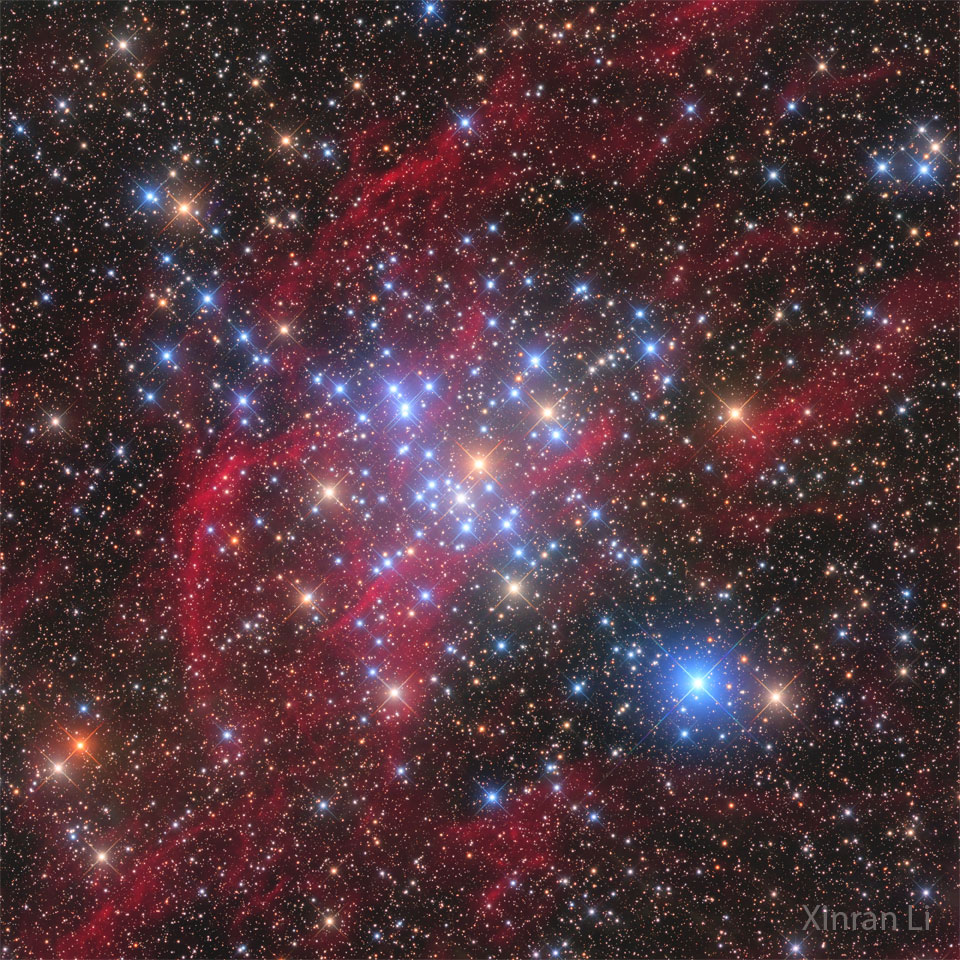M 41 :小蜂巢星團
M41: The Little Beehive Star Cluster

來源:Xinran Li|發表日期:2025-02-25
為什麼有這麼多明亮的藍色恆星? 恆星通常誕生在星團中,其中最亮、質量最大的恆星通常會發出藍色的光芒。在這個 M 41 星團中,肯定也有像太陽這樣亮度較低、不發藍光的恆星,但比較難看到。可以看到幾顆明亮的橙色紅巨星。紅光絲是由擴散的氫氣發出的,這種顏色在這張圖片中經過了特殊的過濾和增強。 在一億年左右的時間裡,明亮的藍色恆星將在超新星中爆炸消失,而較暗恆星略有不同的軌跡將導致這個風景如畫的疏散星團消散。同樣,在數十億年前,我們的太陽也很可能誕生在一個類似 M 41 的星團中,但它早已與它的姐妹恆星漸行漸遠。這張照片是用智利的 Chilescope T 2 拍攝的,歷時四個小時。
原文:Why are there so many bright blue stars? Stars are usually born in clusters, and the brightest and most massive of these stars typically glow blue. Less-bright, non-blue stars like our Sun surely also exist in this M41 star cluster but are harder to see. A few bright orange-appearing red giant stars are visible. The red-light filaments are emitted by diffuse hydrogen gas, a color that was specifically filtered and enhanced in this image. In a hundred million years or so, the bright blue stars will have exploded in supernovas and disappeared, while the slightly different trajectories of the fainter stars will cause this picturesque open cluster to disperse. Similarly, billions of years ago, our own Sun was likely born into a star cluster like M41, but it has long since drifted apart from its sister stars. The featured image was captured over four hours with Chilescope T2 in Chile.
※ 本文由萌芽機器人自動轉貼自每日一天文圖(Astronomy Picture of the Day,APOD),原文為英文,正體中文是透過 DeepL 翻譯及 OpenCC 進行自動處理,內容僅供參考,若有任何錯誤之處還請見諒!
關於每日一天文圖:每日一天文圖網站是美國國家航空暨太空總署與密西根理工大學提供的服務,網站每天提供一張影像或圖片,並由天文學家撰寫扼要說明其特別之處。